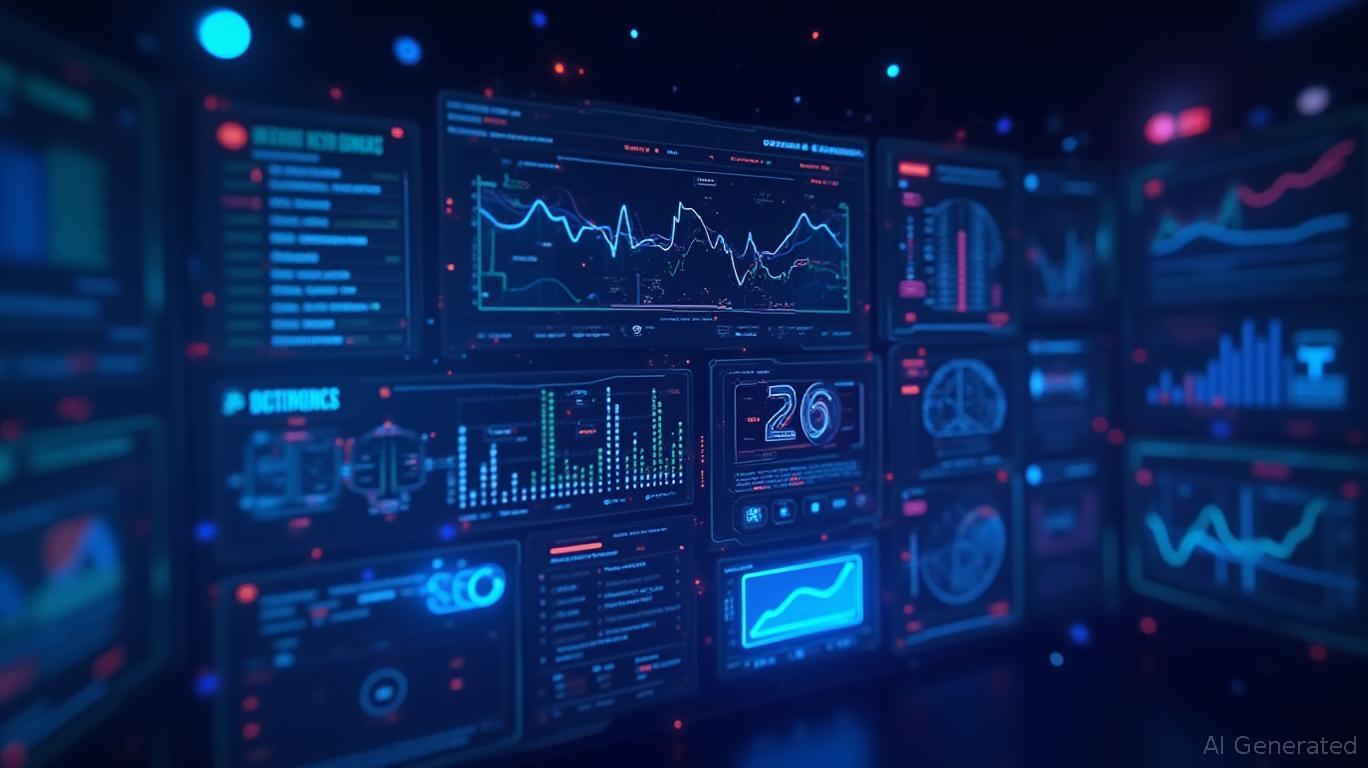AInvest Newsletter
Daily stocks & crypto headlines, free to your inbox
The digital landscape is undergoing a seismic shift, and at its core lies the rise of AI-driven content optimization tools. By 2025, these tools are no longer niche experiments but essential weapons for businesses seeking to dominate search engines, engage audiences, and outpace competitors. With adoption rates soaring and ROI metrics proving irrefutable, the era of human-centric content creation is fading fast. Here's why investors and businesses must act now—and how to capitalize on this transformation.

The data is unequivocal: AI content optimization is no longer optional. By Q2 2025, 47% of marketers rely on AI tools to refine SEO strategies, while 84% use them to identify emerging search trends. The market is growing at a blistering pace, with the AI SEO tools sector projected to hit $4.97 billion by 2033, up from $1.99 billion in 2024. Even more telling, 40% of SMEs now adopt these tools—a figure double that of 2023—driven by plummeting costs and democratized access.
Semrush, a leader in AI-powered SEO, exemplifies this trend. Its platform automates keyword research, content gap analysis, and competitor benchmarking, reducing manual effort by 75% and driving 45% higher organic traffic for e-commerce clients. Meanwhile, ContentShake, a no-code AI content generator, has seen 200% YoY revenue growth by enabling marketers to scale blogs and social campaigns without hiring writers. Its users report 59% higher click-through rates, proving AI's ability to outperform human creativity in high-volume content tasks.
The economic case for AI is staggering. By 2025, 58% of marketers credit AI with enhancing personalized customer experiences, while 52% cite faster workflows. For instance, Microsoft's Azure AI division contributed 13% to Azure's 31% revenue growth in Q2 2025 by automating SEO processes for clients like Qualcomm, saving 2,400 hours monthly.
Even skeptics are convinced: 70% of companies report that tools like ChatGPT cut content production time, and 25% of organizations will rely on AI chatbots as primary customer service channels by 2027. The cost savings are structural: token prices for ChatGPT integrators have dropped by up to 30% since 2023, making AI accessible to all but the smallest businesses.
The real game-changer lies in advancements in natural language processing (NLP) and predictive analytics, which are rewriting the rules of content creation and SEO.
NLP algorithms analyze user intent better than humans, enabling hyper-relevant content that climbs rankings faster.
Predictive Keyword Optimization:
74% of marketers now use AI to align content with search intent, reducing wasted effort on outdated keywords.
Competitor Benchmarking:
Not all is smooth sailing. 28% of U.S. adults distrust AI-generated results, and 35% of employees bypass enterprise tools to use paid alternatives, raising security concerns. However, “people-first” strategies—such as appointing AI “champions” and mandating transparent sourcing—can mitigate these risks.
The key takeaway? AI is not a replacement for humans but a collaborator. Content must still reflect E-E-A-T (Expertise, Experience, Authoritativeness, Trustworthiness), and brands must invest in fact-checking and proprietary “sources of truth” to combat misinformation.
ContentShake (private but rumored to seek an IPO) offers SMEs scalable content creation without technical expertise.
Prioritize Entity Authority:
Build structured data (schema markup) and first-party research to rank in Google's AI Overviews, which now account for 47% of searches.
Train Teams for Hybrid Workflows:
The post-2025 digital economy belongs to those who embrace AI-driven content optimization. With adoption rates accelerating, ROI metrics skyrocketing, and infrastructure costs falling, the window to gain a first-mover advantage is closing fast.
Investors should prioritize SEMR, HUBS (HubSpot), and ADBE, while businesses must integrate AI tools like ContentShake and ChatGPT into their workflows. The alternative? Falling prey to competitors who leverage these tools to dominate search rankings, reduce costs, and engage audiences more effectively.
The message is clear: AI is no longer the future—it's the present. Those who act now will define the next decade of digital dominance.
Tracking the pulse of global finance, one headline at a time.

Dec.15 2025

Dec.15 2025

Dec.15 2025

Dec.15 2025

Dec.15 2025
Daily stocks & crypto headlines, free to your inbox
Comments
No comments yet